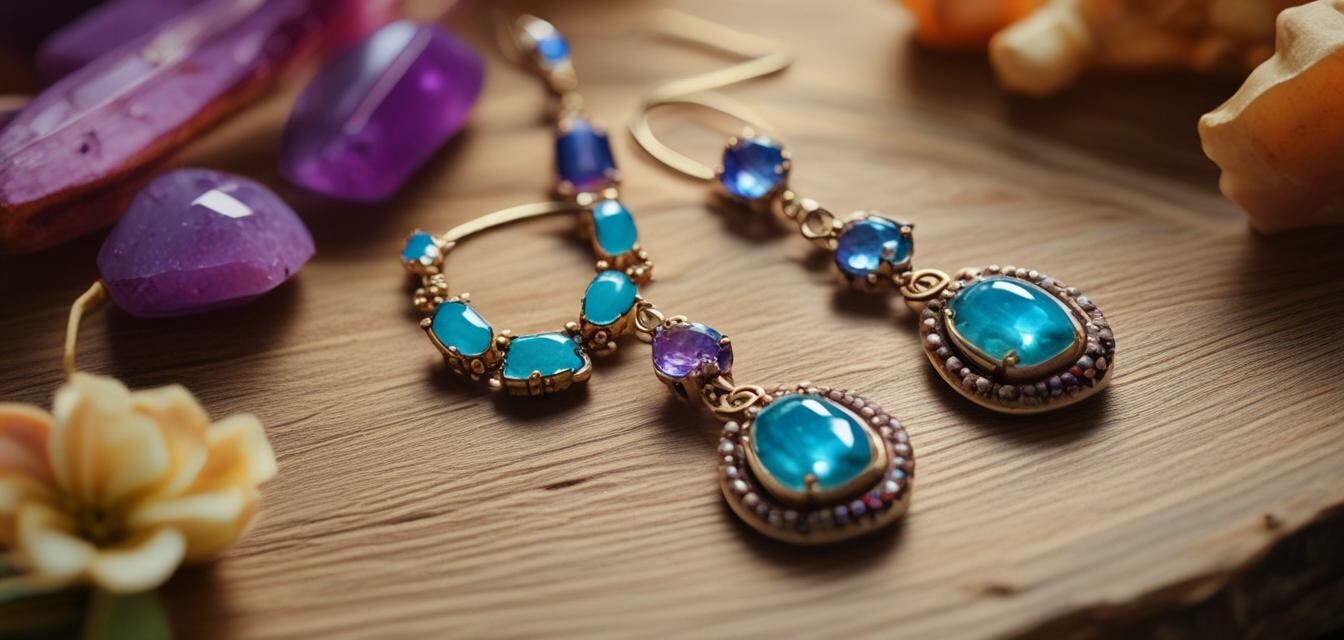
Exploring the connection between art and jewelry
Key takeaways
- Jewelry design is deeply inspired by various art forms.
- Sustainable practices enhance artistic expression in jewelry making.
- Understanding the ethics behind sourcing materials is essential.
- Support artisans who blend creativity with sustainability.
- Explore how art influences the aesthetics of ethical jewelry.
Jewelry is not just an accessory; it is an expression of art, culture, and ethical considerations. The design and craftsmanship behind jewelry pieces often draw inspiration from various styles of art, while staying committed to sustainability. In this article, we will explore the intricate connection between art and jewelry design within the context of sustainability, and how consumers can support these vital practices.
The artistic influence on jewelry design
Throughout history, jewelry has mirrored the trends and styles prevalent in the art world. From the intricate beadwork of ancient civilizations to the minimalist trends of contemporary art, jewelry reflects cultural shifts. Here are some art movements that have significantly influenced jewelry design:
- Art Nouveau: Characterized by organic forms and flowing lines, this style often incorporates natural motifs.
- Art Deco: Known for its geometric shapes and vibrant colors, Art Deco jewelry often uses bold materials and unique design techniques.
- Modernism: Emphasizing simplicity and functionality, modernist jewelry has stripped down embellishments to showcase pure form.
- Contemporary Art: Current trends reflect an amalgamation of styles, incorporating mixed media and unconventional materials.
Sustainability in jewelry creation
As the awareness of environmental impact grows, so does the importance of sustainable practices in jewelry making. Artisans are increasingly using eco-friendly materials and processes. Here are some sustainable practices now common in the jewelry industry:
| Sustainable Practice | Description |
|---|---|
| Ethically sourced gemstones | Gems that are mined in ways that respect both the environment and workers. |
| Recycled metals | Using reclaimed metals reduces the demand for additional mining. |
| Fairtrade certification | A certification assuring that laborers are paid fairly, promoting sustainable development. |
| Upcycled jewelry | Transforming old or discarded materials into new, beautiful jewelry pieces. |
The role of artisans in sustainable jewelry
Artisans play a crucial role in merging creativity with sustainable practices. Their dedication to ethical sourcing results in distinct designs that not only emphasize artistry but also embrace responsibility toward the environment. Here’s why supporting artisans is vital:
- They bring uniqueness to each piece through handcrafted techniques.
- Artisans often champion local cultures and skills, ensuring heritage preservation.
- Many artisans embrace transparency, providing information about their sourcing and production methods.
The impact of art on ethical consumerism
The connection between art and jewelry fosters a movement toward responsible consumerism. As consumers become more informed, they are inclined to purchase jewelry that not only pleases the eye but also supports sustainable practices. By choosing ethical stone earrings over those produced through destructive means, consumers can leverage their purchasing power for positive change.
Tips for conscious consumers
- Research brands and their sourcing practices.
- Look for certifications such as Fairtrade or recycled materials.
- Invest in timeless pieces that reflect personal style and sustainability.
- Support local artisans through platforms that showcase handmade jewelry.
- Educate others about the importance of ethical jewelry choices.
Conclusion
The intersection of art and jewelry design goes beyond aesthetics; it imbues pieces with deeper significance tied to sustainable practices. Every responsibly made item tells a story of the artisans’ craftsmanship, cultural heritage, and commitment to the planet. By understanding and embracing these connections, consumers can cultivate a jewelry collection that is not only beautiful but also ethically sound. For more insights on sustainability practices in the jewelry realm, visit our dedicated blog section.
Pros
- Promotes ethical practices in the jewelry industry.
- Cultivates appreciation for unique craftsmanship.
- Supports artisan communities and local economies.
- Encourages environmentally friendly manufacturing processes.
Cons
- May be higher in cost compared to mass-produced jewelry.
- Limited availability of specific artisan pieces.
- Some brands might lack transparency despite marketing claims.